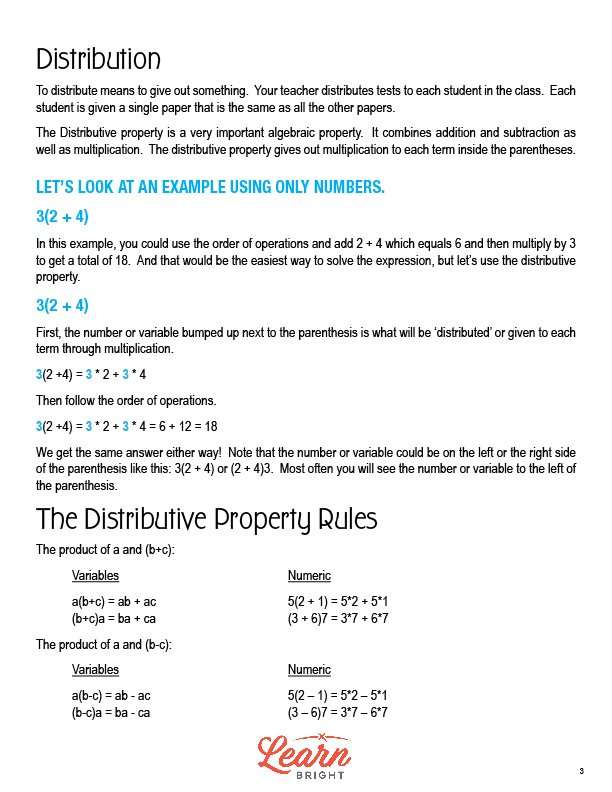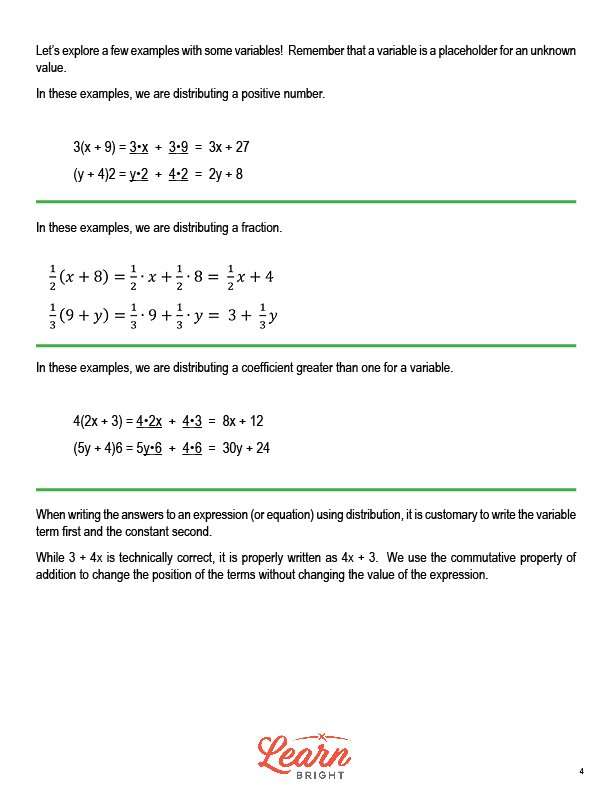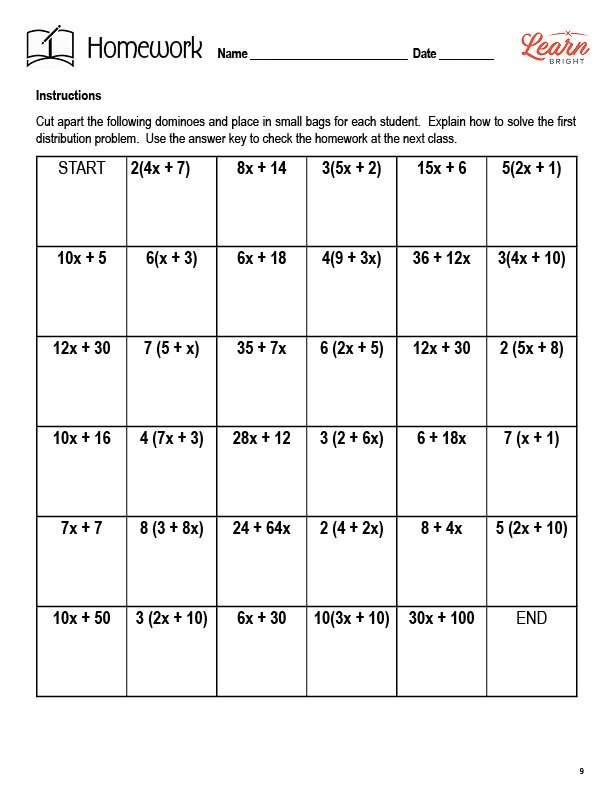Description
What our Distribution lesson plan includes
Lesson Objectives and Overview: Distribution lesson plan introduces students to the distributive property, including what it is and when and how to use it. At the end of the lesson, students will investigate and apply the distributive property with positive integers and variable expressions. This lesson is for students in 6th grade.
Classroom Procedure
Every lesson plan provides you with a classroom procedure page that outlines a step-by-step guide to follow. You do not have to follow the guide exactly. The guide helps you organize the lesson and details when to hand out worksheets. It also lists information in the blue box that you might find useful. You will find the lesson objectives, state standards, and number of class sessions the lesson should take to complete in this area. In addition, it describes the supplies you will need as well as what and how you need to prepare beforehand.
Options for Lesson
Included with this lesson is an “Options for Lesson” section that lists a number of suggestions for activities to add to the lesson or substitutions for the ones already in the lesson. One optional addition to this lesson is to have your students create their own distribution game during class or as a homework assignment. You could also have your students complete their homework in class or use it as another activity. Finally, you could distribute a cookie or a pencil at the beginning of class to demonstrate handing something that is the same to all students.
Teacher Notes
The teacher notes page includes lines that you can use to add your own notes as you’re preparing for this lesson.
DISTRIBUTION LESSON PLAN CONTENT PAGES
Distribution
The Distribution lesson plan includes two content pages. Distributing something is when you give it out. For example, your teacher might distribute a test to each student in your class.
In algebra, the Distributive Property is very important. This property combines addition, subtraction, and multiplication. When you use it, you multiply by each of the terms inside the parentheses.
The lesson walks through an example: 3(2 + 4). For this problem, you could use the order of operations and begin by adding 2 + 4 to get 6. You would then multiply by 3 to get a final answer of 18. This is the easiest way to solve this expression. However, we can also use the distributive property to solve.
To solve using the distributive property, we “distribute” the 3 to the terms inside the parenthesis: 3(2 +4) = 3 * 2 + 3 * 4. We then follow the order of operations from there to solve: 3 * 2 + 3 * 4 = 6 + 12 = 18. Note that we get the same answer no matter which way we solve!
It’s important to note that the number or variable that you’re distributing could be on either the left or right side of the parenthesis. Most often, however, it will be on the left side, like in the example above.
The Distributive Property Rules
There are a few rules to follow when using the distributive property. The lesson walks through both situations with addition and subtraction. For the product of a and (b+c), a(b+c) = ab + ac and (b+c)a = ba + ca. For the product of a and (b-c), a(b-c) = ab – ac and(b-c)a = ba – ca.
The lesson then walks through a few examples that include variables, which are placeholders for unknown values. It shows examples where you’re distributing a positive number, a fraction, and a coefficient greater than one for a variable. Students can review these examples to help solidify their understanding of the lesson.
When you write the answer to an expression or equation using distribution, you should write the variable terms first and the constant second. For example, while 3 + 4x is technically correct, the proper way to write it is 4x + 3. We can change the position of the terms without changing the value of the expression because of the commutative property.
DISTRIBUTION LESSON PLAN WORKSHEETS
The Distribution lesson plan includes three worksheets: an activity worksheet, a practice worksheet, and a homework assignment. You can refer to the guide on the classroom procedure page to determine when to hand out each worksheet.
TABLECLOTH ACTIVITY WORKSHEET
Students will work in groups to complete the lesson activity. Each member of the group will solve ten distributive property problems. They will then compare answers and decide on a final answer to write on the “tablecloth” (a large piece of paper in the center of the table).
SIMPLIFY PRACTICE WORKSHEET
For the practice worksheet, students will simplify 12 expressions using the distributive property, showing their work.
DISTRIBUTION HOMEWORK ASSIGNMENT
The homework assignment asks students to pull dominoes (squares on the worksheet that each contain a distribution problem) out of a small bag and solve.
QUIZ
This lesson also includes a quiz that you can use to test students’ understanding of the lesson material. For the quiz, students will simplify four expressions using the distributive property.
Worksheet Answer Keys
This lesson plan includes answer keys for the activity worksheet, the practice worksheet, the homework assignment, and the quiz. If you choose to administer the lesson pages to your students via PDF, you will need to save a new file that omits these pages. Otherwise, you can simply print out the applicable pages and keep these as reference for yourself when grading assignments.









